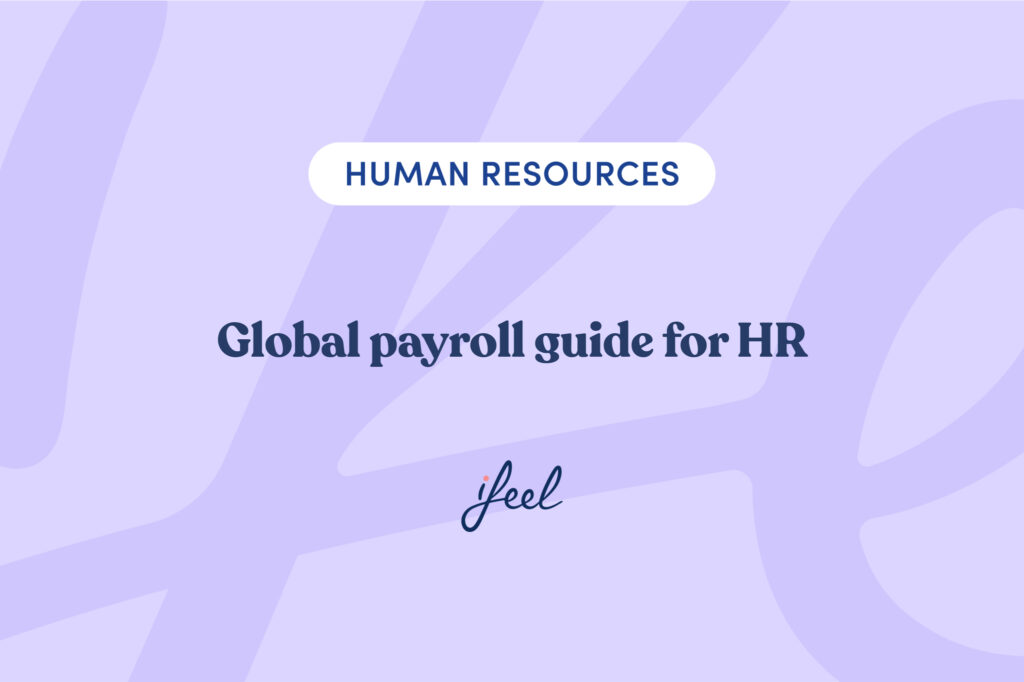As enterprises grow and expand internationally, the sophistication of their organisational structure brings with it a new range of challenges and complexities that require advanced strategic solutions.
For example, enterprises with international operations must deal with the complexity of managing payrolls appropriately in different countries. This involves not only calculating and distributing payments to employees, but also ensuring that everything is done in compliance with the labour and tax laws specific to each country.
In this context, having a global payroll guide for human resources is crucial. This acts as a detailed roadmap that helps enterprises navigate the regulatory and financial labyrinths of multiple jurisdictions, ensuring that all aspects of salary payments are executed correctly, avoiding legal and financial problems that could arise from improper handling.
But how do you create a global payroll guide for human resources? This article will provide a comprehensive overview of how to implement an effective global payroll strategy, considering crucial aspects such as regulatory compliance, appropriate technology and best practices for human resources.
But first, what is a global payroll?
A global payroll is the comprehensive system used by multinational enterprises to manage the salaries and benefits of their employees in different countries. And, although the concept may seem simple, its implementation is notoriously more complex due to the legal and fiscal variations in each jurisdiction.
In other words, because each country has its own labour and tax regulations, this means that enterprises must continually adjust their payroll processes to comply with local regulations.
This need for adaptability became especially evident during the pandemic, when legislative changes were frequent and required a rapid response from enterprises to ensure regulatory compliance. In fact, according to surveys conducted, 83% of executives surveyed are considering a global and remote workforce model, which requires them to have a global payroll guide for human resources, to help them mitigate the complexities of this process.
Understanding the complexities of global payroll
A global payroll is not just an automated system; on the contrary, it is a process that requires a high degree of human interaction, as it requires constant communication with tax authorities, regulators, auditors and financial institutions, each with their own procedures, languages and cultures. In this sense, the complexity of managing a global payroll is amplified, because this diversity not only exists between continents, but even between neighbouring countries.
Therefore, a global payroll must be flexible and robust, capable of adapting to this diversity while maintaining efficiency and accuracy in the payment of salaries and benefits. For enterprises, successful global payroll management means not only complying with regulations, but also optimising their operations internationally, ensuring that their employees are properly compensated and their operations are sustainable.
To achieve this, implementing a global payroll guide for human resources is essential. And this requires a deep understanding of the labour and tax laws of each country in which an enterprise operates because the diversity of regulations can be overwhelming.
From the variability in social contributions to the different ways of calculating income taxes, organisations must be prepared to handle these complexities, adopting decisive strategies in human resources. This implies having a team of experts who are constantly updated on changes in international labour legislation and who can advise the company effectively to comply with these regulations.

What is the difference between national and international payrolls?
When expanding operations beyond national borders, enterprises must adapt to a more complex environment in payroll management. In this case, the international payroll calculation process presents additional challenges compared to its national counterpart, due to the diversity of labour, tax and economic legislation that must be managed.
Below is a table detailing the main differences between these two approaches, highlighting both the complexities and the opportunities offered by global payroll.
| Aspect | National Payroll | International Payroll |
|---|---|---|
| Labour legislation | Based on the regulations of the country itself. | Requires knowledge of the labour legislation of the country where the employee is hired. |
| Data protection | Complies with local data privacy laws. | Must adapt to the data protection regulations of each country. |
| Taxation and compliance | Governed by national fiscal responsibilities. | Must manage different tax and compliance obligations depending on the country. |
| Exchange rates | Not applicable, transactions in national currency. | Needs to manage and update exchange rates between currencies. |
| Employment status | Standard and familiar within the country. | Varies and depends on the labour laws and conditions of each country. |
| Coordination | Less, due to legal and economic homogeneity. | More, due to the diversity of regulations and procedures. |
| Access to talent | Limited to the national labour market. | Offers access to a global talent market. |
So, international payroll management is more complex due to legislative, fiscal and economic diversity, but it also offers the advantage of accessing a more diverse and broader talent pool. That is why having a global payroll guide for human resources can be a very useful tool.
Why have a global payroll guide for human resources?
Having a global payroll guide for human resources is essential in any company that wants to unlock the full potential of its teams. The implementation of an efficient payroll system that offers accessibility and visibility not only reduces the operational burden on the payroll team, but also enhances the commitment and satisfaction of employees.
When workers have easy access to relevant information and can manage their queries quickly and securely from anywhere in the world, their perception of the enterprise improves, which can translate into greater productivity and loyalty to the organisation.
In short, a well-designed global payroll guide for human resources is capable of helping teams of people strengthen the relationship between employees and the enterprise, ensuring a positive and coherent work experience.
‘At Werfen, we care about people. Our employees are our greatest asset. For this reason, we are committed to their well-being, in all its dimensions.’
– David Peñaranda, Health & Safety Manager Spain and Portugal at Werfen, an ifeel partner company.
What influence does payroll have on the employee experience?
Efficient payroll management plays a crucial role in the employee experience, influencing both their satisfaction and their commitment to the organisation. It is not just a question of ensuring that salaries are paid on time; a well-managed payroll involves offering an interactive and secure environment, such as HR Dashboards, where employees can easily access their employment information.
This not only includes the timely distribution of salaries and receipts, but also the provision of individual documents, keeping employees informed about the latest corporate policies and managing their daily queries about salaries and other benefits.
The Leadership Lens🔎
In today’s globalised world, leaders in Human Resources face the challenge of managing international payrolls with efficiency and accuracy. The key is to establish a deep understanding of local regulations and cultural differences to ensure compliance and fairness in all regions.
In this sense, visionary leaders are responsible for fostering an environment where continuous training on labour regulations is a priority, ensuring that payroll teams are always up to date. Did you know that proper payroll management can significantly influence the motivation and commitment of employees?
That is why having a global payroll guide for human resources not only optimises processes, but also reinforces employee confidence in the organisation.
Possible obstacles in the implementation of a global payroll
Implementing a global payroll is an ambitious project that promises multiple benefits for large international enterprises, but it also entails a number of significant challenges.
These obstacles can complicate the transition from local payroll systems to an effective global model, and it is therefore crucial to be aware of them in order to be able to prevent them. Below, we explore the main challenges organisations face and how they can overcome them.
1. Changing established practices
Traditional practices, such as manual approval management, often limit the efficiency and capacity of a global payroll. In addition, resistance to change can be a major impediment, and it is essential to adopt up-to-date technology and processes that facilitate automated and real-time management.
Technology provides consistency and control through unified policies and processes, reducing errors and compliance risks across multiple jurisdictions, allowing for the consolidation of data from various payroll platforms, facilitating accurate and unified reporting globally.
2. Lack of local knowledge and expertise
One of the biggest challenges when implementing global payrolls is the lack of knowledge about local legislation and regulations. Each country has its own labour and tax laws, which requires a detailed understanding to avoid non-compliance.
In this sense, collaborating with local experts or global partners to take advantage of their specialised knowledge in regulations and linguistic contexts can help ensure that the organisation complies with all regulations and avoids significant penalties.
3. Legal non-compliance or inconsistencies
Enterprises often face difficulties in aligning their global payroll policies with local regulations, which can lead to inconsistencies and risk of non-compliance. The integration of unified processes and policies is essential, but so is adapting them to the particularities of each jurisdiction to avoid severe sanctions.
4. Challenges with multiple currencies
Managing payroll in multiple currencies adds complexity due to exchange rate fluctuations. That is why enterprises must ensure that their payroll systems are always updated to reflect current exchange rates and avoid costly errors in currency conversion.
5. Linguistic or cultural barriers
The need to translate payroll documents and communicate effectively in multiple languages can increase costs and operational complexity. That is why it is crucial to implement solutions that have expert advice on local legislation and language skills, which facilitate the translation and understanding of financial terms.
6. Establishing consistent benefits
Offering uniform benefits packages in different countries can be complicated due to legal and cost variations. Enterprises must carefully evaluate which benefits are viable and valuable to employees in each region, ensuring an attractive and sustainable value proposition.

Unlocking teams’ potential
At ifeel, we know that a global payroll guide for human resources is an indispensable tool for any company operating internationally. Implementing effective practices and using the right technology not only ensures regulatory compliance, but also promotes a positive work environment. Remember, adopting proactive strategies for human resources and establishing clear OKRs can make all the difference in the success of your global operations.
To support companies in this process, our team of expert workplace well-being psychologists has created a mental well-being solution for businesses that improves talent retention, reduces presenteeism at work, and combats employee stress.
With our mental well-being solution, your company’s HR managers can receive personalised, data-driven advice on improving mental health at work. In addition, this solution offers employees a 360° mental well-being solution structured at different levels according to their needs. Try our solution now to see how it could help you.
We hope you found this article on the global payroll guide interesting. If you would like more information about our mental well-being solution for enterprises, simply request it and we will get in touch with your team as soon as possible.











